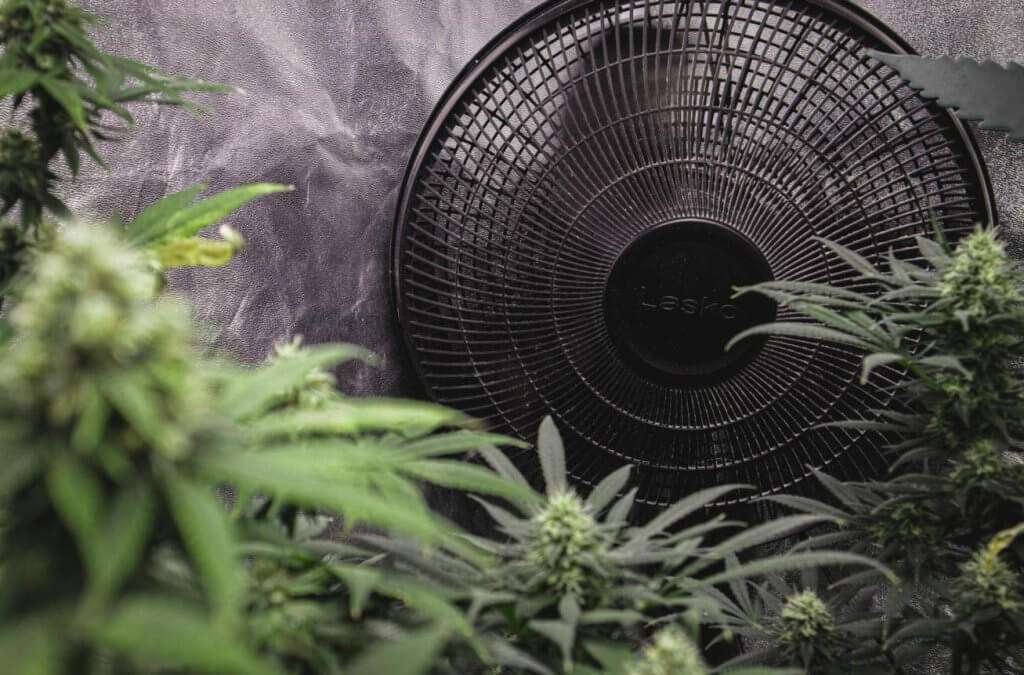
When we think about caring for our indoor plants, our minds usually jump to sunlight and water. But there’s another crucial element that’s often overlooked: air circulation. Just like us, plants need to breathe! Good airflow is essential for keeping your houseplants healthy, strong, and free from annoying pests and diseases.
This guide will walk you through everything you need to know about giving your green friends the fresh air they crave.
The Benefits of Good Airflow
Why is a gentle breeze so important for your indoor jungle?
- Strengthens Stems: A light breeze mimics the natural environment, encouraging plants to grow stronger, sturdier stems to withstand the movement.
- Prevents Pests: Stagnant, humid air is a breeding ground for pests like spider mites and fungus gnats. Good circulation makes it harder for them to settle on your plants.
- Reduces Fungal Diseases: Mold and fungal issues like powdery mildew thrive in damp, still conditions. Airflow helps leaves dry faster after watering, significantly reducing the risk of disease. This is especially important for plants that are sensitive to overwatering. For more tips on that, check out our guide on how to water a ZZ plant.
- Aids in “Breathing”: Plants exchange gases (like oxygen and carbon dioxide) through tiny pores on their leaves called stomata. Air circulation ensures a fresh supply of CO2 for photosynthesis.
DIY vs. Commercial Fans
You don’t need a wind tunnel to keep your plants happy. The goal is a gentle, indirect breeze.
- DIY/Natural Methods: Simply opening a window for a few hours a day can do wonders. If you have a ceiling fan, running it on low is another excellent option. The key is to avoid placing your plants in the direct path of a strong, cold draft.
- Commercial Fans: For more controlled and consistent airflow, a small fan is a great investment. You don’t need anything large or industrial. A small, oscillating desk fan or a clip-on fan is perfect for most indoor plant setups.
Best Placement & Schedules
Where you put your fan and how long you run it are key to success.
- Placement: Never point the fan directly at your plants, as this can dry them out too quickly. Instead, place it nearby and aim it so the air circulates gently around them. An oscillating fan is ideal because it varies the direction of the breeze.
- Scheduling: You don’t need to run a fan 24/7. A few hours each day is typically sufficient. The best way to manage this is with a simple outlet timer. Set it to run for 2-4 hours in the morning and perhaps another couple of hours in the afternoon.
Preventing Mold and Pests
Good air circulation is your number one defense against mold and pests. When air is stagnant, the moisture from watering lingers on the leaves and soil surface, creating the perfect environment for problems to take root. By keeping the air moving, you whisk away that excess moisture, making your plant a much less inviting home for unwanted guests.
Our Top Product Suggestions
Here are a couple of great, quiet fans perfect for plant parents.
1. Honeywell TurboForce Air Circulator Fan
This small but mighty fan is quiet and provides excellent air circulation without taking up much space. You can feel its effects from feet away, making it perfect for placing across the room to create a gentle, room-wide breeze.
💨 Get the Honeywell Fan!2. Genesis 6-Inch Clip-On Fan
This fan is incredibly versatile. You can clip it directly onto a shelf, table, or plant stand to provide a targeted, gentle breeze right where you need it. It’s great for multi-level plant setups.
🍃 Try this Clip-On Fan!Frequently Asked Questions (FAQs)
Is a ceiling fan good enough for my plants? Yes! A ceiling fan on a low setting is a fantastic way to circulate air in a room without creating a harsh, direct draft.
How do I know if my plants have poor air circulation? Look for signs like white, powdery mildew on leaves, soil that stays wet for days after watering, or a persistent problem with fungus gnats.
Can too much wind harm my plants? Absolutely. A strong, constant draft can dry out your plants’ leaves and soil, causing them to wilt or develop brown, crispy edges. The goal is always a gentle, indirect breeze.
Happy growing!